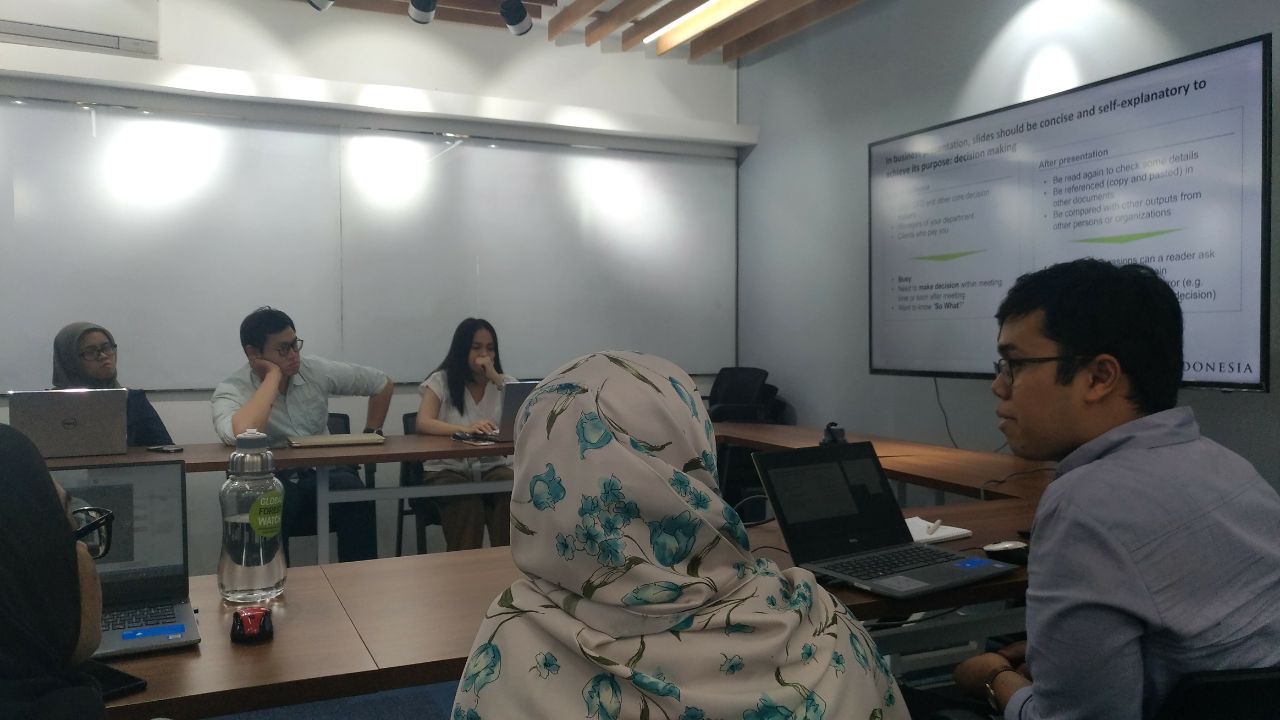
Brown-bag, a WRI’s Learning Culture
By Thontowi Suhada, a researcher for Wahana Riset Indonesia.
December is special, not only because holidays are nearing but also because WRI Indonesia hosted several insightful brown-bags. Brown bag meeting is an opportunity to all WRI associates and staff to share knowledge, cross train each other, and develop our skills. The term brown-bag comes from the paper lunch bag that participants usually bring. Of course, we do not actually bring our brown paper bag, as we tried to be paperless. It is more to reflect brown-bag meeting as effortless, light-hearted and casual. All staff and associates can propose to deliver a brown-bag, regardless of position and how long we have been here. This month, I felt honored to co-present a brown-bag session with my new colleague, Nanda, a new hired Forest and Land Use analyst.
Nanda worked at a top-tier business consultant. As a business consultant, Nanda has a vast experience in presenting ideas to a wide range of audience. Usually as a researcher, we often too focus on content of what we presented. However, how we deliver the content and ideas will have different effects on the audience and will influence whether or not audience will consider our research as decision making-materials. Nanda elaborated both conceptual and technical aspect of slides, from how human vision perceive flow of information to how we should choose color in our slides. What is striking to me is that what seems to be trivial matter, such as color, can really affect the audience perception. It was not only a theoretical explanation, but also a learning by doing. Nanda closed his brown-bag session by giving us an exercise to apply the lessons.
 Brown-bag meeting. Photo by Thontowi Suhada
Brown-bag meeting. Photo by Thontowi Suhada
While Nanda talked more about the technical skill and concept, I tried to enrich the brown-bag by sharing my knowledge about system thinking and applied research. I started by telling a story about Macquarie island, a classic case of nature interconnectedness. It is a story about a good intention of human intervention that is not coupled with an understanding of the system interconnectedness, which ended up in a disastrous result. The main point of the story is that in designing a policy, we need to consider not only the affected entity, but also the whole affected system and how each of them may respond to the intervention program. Later, I shared how this concept was applied in designing a model of global phosphorus recycling programs.
It was an interesting and rich discussion but I realize that my presentation was far from perfect. I even often doubt that the audiences understood what I explained. To mitigate this, I asked them whether or not they comprehend my delivery to check if I have explained clearly.
Our country director said, as a research organization, we want to “place great value in conducting, communicating, debating and arguing many aspects of scholarly research.” And if I can add, this research organization should also be a place that gives enough space to make mistake, so we can learn from our mistake and keep developing our self. Brown-bag is an embodiment from those words. It is a venue to celebrate our learning culture.